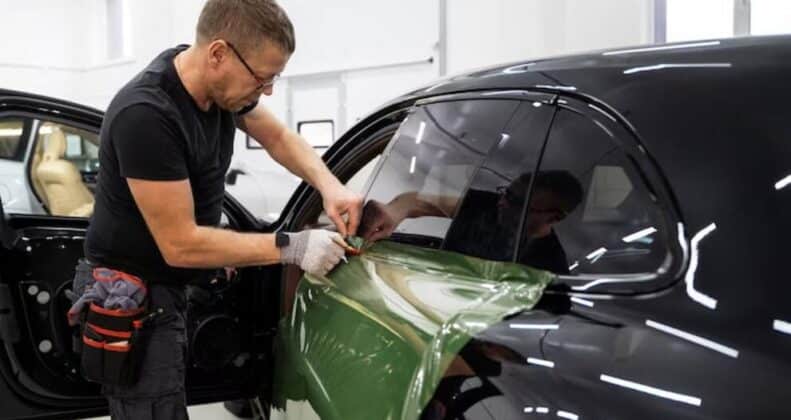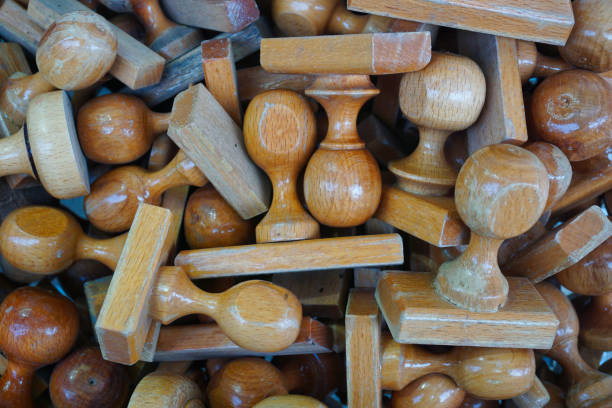In the world of automotive customization, vehicle wrapping has emerged as a versatile and popular option for transforming the look of cars, trucks, and even motorcycles. Whether you’re aiming to personalize your vehicle’s appearance, advertise a business, or protect its original paint, vehicle wrapping offers a myriad of benefits. This comprehensive guide explores everything you need to know about vehicle wrapping dubai, including its benefits, types of wraps, installation process, maintenance tips, and more.
What is Vehicle Wrapping?
Vehicle wrapping involves applying a vinyl film to the exterior surfaces of a vehicle. This film conforms to the contours of the vehicle, covering its paintwork completely or partially. Wraps are available in a wide range of colors, finishes, and textures, allowing for endless customization possibilities. The process is non-permanent, meaning the wrap can be removed without damaging the underlying paint when desired.
Benefits of Vehicle Wrapping
-
Customization: Vehicle wraps allow you to change the color and finish of your vehicle without the commitment of a permanent paint job. They come in matte, gloss, satin, metallic, chrome, and even textured finishes, providing options to suit every taste.
-
Advertising: Businesses can use vehicle wraps as mobile advertising platforms. A well-designed wrap can turn your vehicle into a rolling billboard, promoting your brand and services wherever you go.
-
Protective Layer: Wraps act as a protective barrier against scratches, stone chips, and UV damage, preserving the original paint underneath. This is especially beneficial for leased vehicles or those used in harsh environments.
-
Resale Value: A well-maintained wrap can enhance the resale value of your vehicle by protecting the paint and preserving its pristine condition over time.
-
Versatility: Vehicle wraps can be applied to cars, trucks, vans, buses, motorcycles, boats, and even aircraft, offering versatility for personal, commercial, and promotional purposes.
-
Cost-Effective: Compared to traditional paint jobs, vehicle wraps are generally more cost-effective and can be completed in a shorter timeframe, minimizing downtime for commercial vehicles.
Types of Vehicle Wraps
-
Full Wrap: Covers the entire vehicle, including all exterior panels and surfaces. Full wraps offer maximum customization and protection, completely transforming the vehicle’s appearance.
-
Partial Wrap: Covers specific sections of the vehicle, such as the hood, roof, or doors. Partial wraps are more budget-friendly while still allowing for impactful customization and advertising.
-
Color Change Wrap: A solid-colored wrap that changes the vehicle’s original paint color. Popular options include matte, gloss, satin, and metallic finishes.
-
Printed Wrap: Incorporates custom graphics, logos, or designs printed onto the vinyl wrap. Printed wraps are ideal for advertising purposes or creating unique, eye-catching designs.
-
Textured Wrap: Offers a textured surface, such as carbon fiber, brushed metal, or leather, providing a distinctive look and feel to the vehicle.
The Vehicle Wrapping Process
While vehicle wrapping is best left to professionals for optimal results, here’s an overview of the typical process:
-
Design Consultation: Begin with a consultation to discuss your vision, goals, and preferences for the wrap design. Professional wrap designers can create custom graphics or recommend suitable colors and finishes.
-
Surface Preparation: The vehicle undergoes thorough cleaning to remove dirt, grease, and wax that could interfere with adhesion. Surface preparation is critical for ensuring a smooth and durable wrap application.
-
Wrap Application: The vinyl wrap is carefully applied to the vehicle’s surfaces, starting with larger panels and working towards smaller sections. This process requires precision to avoid wrinkles, bubbles, and misalignments.
-
Trimming and Heat Application: Once applied, the wrap is trimmed to fit around edges, door handles, and other contours. Heat guns are used to stretch the vinyl and conform it tightly to the vehicle’s shape for a seamless finish.
-
Finishing Touches: After the wrap is applied, any necessary finishing touches are made, such as applying sealants or edge sealers to enhance durability and longevity.
Maintaining Your Vehicle Wrap
Proper maintenance is key to preserving the appearance and longevity of your vehicle wrap. Follow these tips to keep your wrap looking its best:
-
Hand Washing: Wash your wrapped vehicle regularly using a pH-neutral car shampoo and a soft sponge or microfiber cloth. Avoid automated car washes with abrasive brushes that can damage the wrap.
-
Avoid Harsh Chemicals: Use gentle cleaners that are safe for vinyl wraps. Avoid harsh solvents, abrasive compounds, and wax-based products that can degrade the vinyl and diminish its appearance.
-
Protect from Sun Exposure: Whenever possible, park your wrapped vehicle in shaded areas or covered parking to minimize prolonged exposure to UV rays, which can cause the wrap to fade over time.
-
Inspect Regularly: Periodically inspect the wrap for signs of damage, such as tears, scratches, or lifting edges. Address any issues promptly to prevent further damage and ensure the wrap remains securely adhered.
-
Professional Inspection and Maintenance: Consider scheduling periodic inspections and maintenance with a professional wrap installer. They can assess the condition of the wrap, perform any necessary repairs, and apply protective treatments to extend its lifespan.
Choosing a Vehicle Wrapping Service
When selecting a vehicle wrapping service, consider the following factors to ensure a successful outcome:
-
Experience and Expertise: Choose a service provider with a proven track record of successful wrap installations and positive customer reviews. Experience with various vehicle types and wrap styles is essential.
-
Quality of Materials: Ensure the service uses high-quality vinyl wrap materials from reputable manufacturers known for their durability and colorfastness.
-
Design Capabilities: Look for a service that offers custom design capabilities or works with professional graphic designers to create eye-catching wraps tailored to your preferences.
-
Installation Techniques: Ask about the installation techniques used by the service provider. Proper surface preparation, application methods, and finishing techniques are critical for achieving a flawless wrap.
-
Warranty and Aftercare Support: Inquire about warranties offered on both materials and labor. A reputable service provider should stand behind their workmanship and provide ongoing support for maintenance and repairs.
Vehicle wrapping offers a versatile and effective way to customize, protect, and advertise your vehicle in Dubai and beyond. Whether you’re looking to change the color of your car, promote your business on the go, or safeguard your vehicle’s paint from the elements, wraps provide a durable and cost-effective solution. By understanding the types of wraps available, the wrapping process, proper maintenance techniques, and choosing a reliable service provider, you can ensure your vehicle wrap enhances its appearance and durability for years to come. Consider consulting with a professional vehicle wrapping service in Dubai to explore the endless possibilities of transforming your ride with style and protection.











